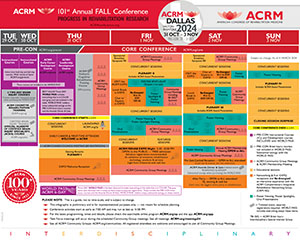Measurement
Artificial Intelligence
Validation of an AI Skeletal Estimation Programme for Calculating Response Times of Object Proximity Perception Devices for the Visually Impaired and Others
Friday, November 1, 2024
3:45 PM - 4:00 PM
Location: Station 13: ROOM: POSTERLAND / Trinity Poster / Exhibit Hall REGION: Tower Lobby Level >>>

Akira Kimura, PhD (he/him/his)
Professor
GUNMA PAZ UNIVERSITY
Takasaki, Gumma, Japan
Presenting Author(s)
Research Objectives: To determine the practicality of a device that can be used to notify people with visual or hearing impairments of approaching objects, based on the time required to obtain the coordinate points of a time series during markerless skeleton estimation, in order to quantify the stimulus-response time.
Design: Experimental period: December 2023 - May 2024 Two one-hour sessions per subject
Research design: Experimental study
The researcher who was not involved in the development of this program at all was asked to create a manual, operate the program, and acquire time-series coordinate points in less than 5 minutes, using videos of a series of experiments created for verification purposes.
Setting: Location: general non-experimental classroom on the university campus.
Participants: Subjects: Seven subjects with more than One year of experience in obtaining human behavior data using a computer.
Interventions: N.A
Main Outcome Measures: Endopoint: Whether or not the AI skeletal estimation program can acquire time-series coordinate points within 5 minutes.
The time required and success or failure of each of the four parts of the operation were recorded: 1. starting up the program, 2. reading the video data, 3. outputting the coordinate points, and 4. measuring the time from the start of the stimulus to the response.
Results: The average age of the participants was 31 years, with a male to female ratio of 5:2. The average operating history was 7.2 years.
All first-time evaluations, All participants succeeded in obtaining the coordinate point data within 5 minutes.
The commercial time for each task was 1. starting up the program, 2. reading the video data, 3. outputting the coordinate points, 4. calculating the reaction time from the point of stimulus initiation, and the average time for success was 1:65 s, 2:30 s, 3:35 s, 4.155 s, 285 s in total.
Conclusions: This program demonstrated that it is possible to analyze one trial in less than 5 minutes to easily quantify the stimulus response time as a practical device for alerting people with visual or hearing impairments of the approach of some object. The practicality of this program was confirmed.
Author(s) Disclosures: There are no COIs in this study.
Design: Experimental period: December 2023 - May 2024 Two one-hour sessions per subject
Research design: Experimental study
The researcher who was not involved in the development of this program at all was asked to create a manual, operate the program, and acquire time-series coordinate points in less than 5 minutes, using videos of a series of experiments created for verification purposes.
Setting: Location: general non-experimental classroom on the university campus.
Participants: Subjects: Seven subjects with more than One year of experience in obtaining human behavior data using a computer.
Interventions: N.A
Main Outcome Measures: Endopoint: Whether or not the AI skeletal estimation program can acquire time-series coordinate points within 5 minutes.
The time required and success or failure of each of the four parts of the operation were recorded: 1. starting up the program, 2. reading the video data, 3. outputting the coordinate points, and 4. measuring the time from the start of the stimulus to the response.
Results: The average age of the participants was 31 years, with a male to female ratio of 5:2. The average operating history was 7.2 years.
All first-time evaluations, All participants succeeded in obtaining the coordinate point data within 5 minutes.
The commercial time for each task was 1. starting up the program, 2. reading the video data, 3. outputting the coordinate points, 4. calculating the reaction time from the point of stimulus initiation, and the average time for success was 1:65 s, 2:30 s, 3:35 s, 4.155 s, 285 s in total.
Conclusions: This program demonstrated that it is possible to analyze one trial in less than 5 minutes to easily quantify the stimulus response time as a practical device for alerting people with visual or hearing impairments of the approach of some object. The practicality of this program was confirmed.
Author(s) Disclosures: There are no COIs in this study.
Learning Objectives:
- Upon completion, participant will be able to know the easy to take a motion capture with AI skelton method.
- Upon completion, participant will be able to get a motion capture software with AI skelton method by researcher.
- Upon completion, participant will be able to get a representing body position with coordinate points and reaction time data.motion capture software with AI skelton method by researcher.

.jpg)
.jpg)
.jpg)
